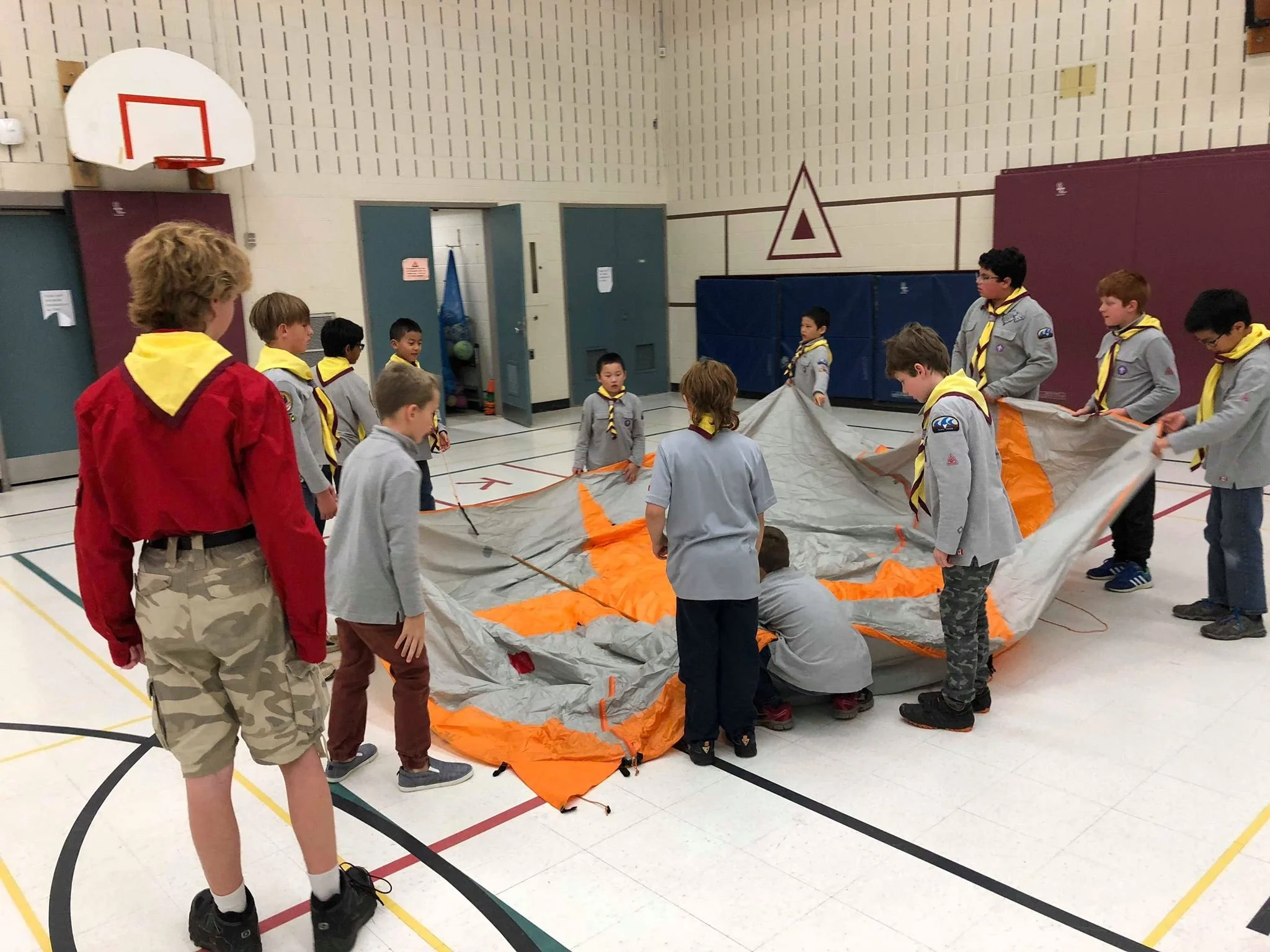Regular adventures run all year long with a focus from mid-September till May each year.
Our weekly meetings are at Masonville Public School, located at 25 Hillview Boulevard, London.
Beaver Scouts
Wednesdays, 6:30 - 7:30 p.m.
Cub Scouts
Wednesdays, 7:00 - 8:30 p.m.
Scouts
Wednesdays, 7:30 - 9:00 p.m.
Venturer Scouts
To be determined by the Venturers
Search here for other outdoor camping, fundraising and community engagement events.
History of Masonville Public School
For more news and events on Scouting in London Ontario, visit London Area Scouting!
Calamity Corners, so named by local residents, was born out of two disastrous accidents at the intersection of Highways 4 and 22. (Richmond Street and Fanshawe Park Road)
However, the actual name of the Corners was Masonville.
Prior to 1857 this little hamlet at the junction of Proof Line Road (Richmond Street), and the 5th concession was known as McMartin’s Corners, the name of one of the hotel owners at the time.
After the circulation of a petition, a post office was established in the hotel owned by Robert Mason, hence the name Masonville. Robert Mason was postmaster from December 1, 1874 until March 1881.
In the paper Recollections of Masonville, written by D.J. Dickson, it was stated that “Masonville, at an early date was a manufacturing centre of note, having within, the district three or four factories employing the surplus of labour of the community. The Bryan Brush and Broom Factory was the only one of its kind west of Hamilton, and employed 10 or 12 hands.” (P 83, Lewis)
John Hewings was a well-known manufacturer of boots and shoes in Masonville. He made footwear of such good quality that he received a great many orders which caused him to employ four or five helpers. After his retirement Hewings lived in a small house on the east side of Proof Line Road and conducted a fish-monger business. He became a familiar figure delivering his fish from door to door on the Proof Line Road.
The Bryan Brush and Broom Factory was destroyed by fire, and a few years after, a small plant was built and operated where wooden articles of all kinds were made. This plant was also destroyed by fire and another plant was opened that made farm implements of all kinds, the iron work done by a local blacksmith. Also in the village were the usual dressmaking and millinery shops, one or two general stores and two blacksmith shops.
One of three London toll gates was located along Proof Line Road, a short distance south of Masonville at the “V”, where Richmond Street and Western Road meet. The gate-keeper was John Wyatt, who became widely known because he met so many people travelling the Proof Line Road. No one knew any details about Mr. Wyatt, but it was rumoured he had been a slave driver from the Southern States, and that he was greatly handicapped, having two artificial limbs, which lacked any modern device for comfort which made walking a difficulty.
Cedar Terrace Farm, which was located on Western Road, a short distance from the toll-gate, was the home of Joseph H. Marshall, Conservative Member of Parliament for East Middlesex for many years. Mr. Marshall took great pride in his dairy herd which supplied to Victoria Hospital, the first certified milk with the required low bacteria content. His pasture is now part of the campus of the University of Western Ontario.
Masonville School opened in 1857 as School Section 18. It was originally across the street from its present location. In 1872, the present site was purchased for $300, and in 1873 a brick school was built for $2,400.00. This brick school consisted of one room. School Section 18 included Masonville, Northdale, and Broughdale schools. Due to overcrowding in 1917 (100 students in a one room schoolhouse), the district was divided and Broughdale was awarded its own school.
The Thames River became the boundary line for the Masonville school, and the one room school was used until 1947, when two rooms of the present school were built. In 1950, staggered classes were introduced due to overcrowding, and School Section #30 was created which became known as Northdale.
In 1953, a third and larger room was added to Masonville school, to accommodate community activities. Later, this room was used for the kindergarten room. In 1955, further overcrowding led to more expansion, and a playground was added to the west side of the school. 1957 saw the school undergo another facelift, and the following statement was issued; “A school consisting of five classrooms, well maintained, beautifully decorated and thoroughly equipped” (intro. Masonville Yearbook, 1994).
In 1960 Masonville was annexed by the city of London forcing the school to undergo two more building projects.
-----------------------------------
Lewis, Jennie Raycraft Birr and Beyond, Birr Women’s Institute, 1958
Masonville Public School Yearbook, 1994

